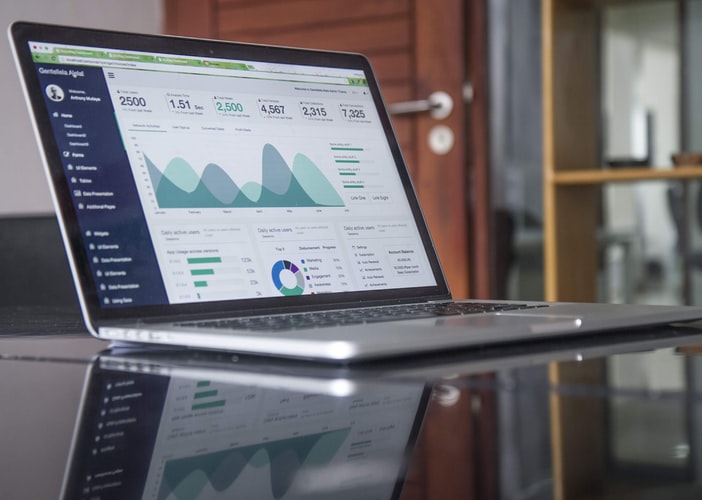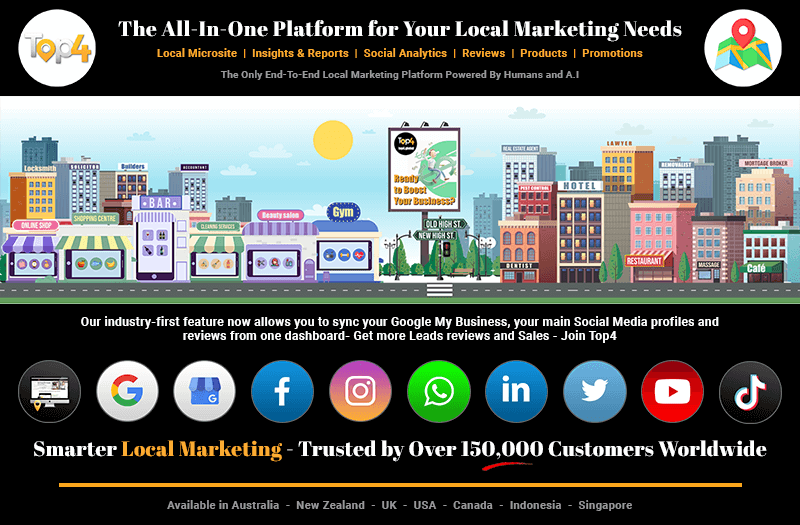The future trends you were using to guide your digital marketing strategy previously may now be outdated. Learn what new trends matter today. Here are 10 Top Digital Marketing Trends to Watch Through 2021.

This past year, digital transformation became a reality for businesses of all kinds as the global pandemic accelerated the pace of change by years.
The future trends you were using to guide your digital marketing strategy previously may now be outdated, while entirely new issues have sprung up to command our attention.
Consumer needs and behaviours have dramatically changed.
In this column, we’ll take a look at what’s trending now, with an eye to where you should prepare to allocate budget in upcoming quarters to stay ahead of your competition.
1. Digital Changes in Consumer Behavior Are Here to Stay
McKinsey found that the pandemic accelerated ecommerce adoption by 10 years in just 3 months.
In fact, 60% of companies across sectors witnessed new buying behaviours over this past year.
The time to pivot and keep up with the demand for quick and easy online ordering, curbside pickup, and contactless delivery has passed.
Now, companies are looking to build security and resilience for the future.
IBM’s most recent Institute for Business Value report finds that transitioning to a more resilient infrastructure is a priority for 52% of retail brands, alongside deploying contactless mobile payments (47%) and creating more robust digital selling platforms (45%).
There’s no point in waiting for a return to “normal” and, according to research from my company, vaccine and re-opening are already driving new online search opportunities.
Plans you had put in motion (or shelved as low priority) prior to the pandemic must be re-evaluated and reprioritized.
Put it all on the table – timelines, budget, scope, and order of priority. Some initiatives may need to be accelerated and others entirely scrapped.
Plan now for where you want to be five years post-COVID – not where you thought the organization would be by now before it ever happened.
2. Marketers Need to Get Ahead of Consumer Demand with Real-Time Insight
I’ve said it before and will say it again – search insights are as close to the real-time voice of the customer as you can get.
Consumers are explicitly telling brands about their wants, needs, and intent in search queries and onsite behaviour.
If your organization isn’t set up to listen to, analyze, and then activate these insights with real-time personalizations, you’re missing out on a massive opportunity to connect and engage.
Get the people, processes, and platform in place to put this most valuable customer data to work.
3. Improving Content Velocity and Quality to Get the Edge
More is not always better, especially when it comes to content. That’s why any strategy to scale content marketing must factor in both velocity and quality in equal measures.
If you’re putting painstaking work and attention into your content but only able to publish once a month, you’re missing out on so many opportunities to appear in search, social, email, and other channels when compared to your more productive competitors.
Even so, we know the critical importance of expertise, authority, and trust (E-A-T) in content. There’s no point in churning out a high volume of low-quality content.
Instead, look at what you need to improve and implement in order to create quality content at scale.
4. Customers Are Looking to Brands to Deliver Connected Digital Experiences

In its recent State of the Connected Customer survey, Salesforce found that 80% of customers believe the experience they have with a company is just as important as its products and services.
Whether they’re chatting with an AI support bot, talking to a customer representative on the phone, or dealing with sales, customers expect that agents will have access to their information.
They expect that one interaction will pick up where the other left off – that they won’t have to start all over again in each new engagement with the brand.
The same study also found 62% of customers say their experience with one industry influences their expectation of others.
Verticals that had been slower to the digital transformation table – manufacturing, construction, and agriculture, for example – are being challenged to keep pace with retail, business services, and other fast movers.
5. Intelligent Automation in Digital Takes Us Beyond Simple Replication
SEO professionals and digital marketers are finding that simply automating tasks to reduce redundancy is no longer enough.
A key digital trend is that the number of consumer interactions and touch-points has ballooned. The volume of data we have to analyze has exploded.
As a result, deep learning, machine learning, natural language processing, and robotic process automation (RPA) are all finding their way into SEO and digital marketing workflows.
Intelligent automation means letting go of the need to make every single decision.
It means empowering machines to not only take action in pre-programmed if/then scenarios but to actually learn about and get to know each customer in ways we, as humans, simply cannot do at scale.
And it means enabling those machines to take action in real-time when the customer is most receptive to personalized messaging, content, deals, and recommendations.
6. First-Party Data Grows in Importance and Value
As Google plans to phase out third-party cookies, PPC and SEO pros alike are scrambling to strategize for a cookieless future. In fact, 46% say cookie depreciation is their top challenge in media for 2021.
As ad targeting and behavioural analysis are set to become more difficult, the value and importance of first-party data are clear.
Plan now for how you will handle consumer questions and concerns around privacy, data storage, and disposal.
Determine what value you’re able to offer consumers in exchange for their data.
Evaluate the impact this trend will have on your measurement and analytics processes.
7. Hyperlocalization Moves Beyond Geography
The pandemic ushered in an acute awareness of supply chain issues and a widespread desire in consumers to support local businesses.
While “value for money” was the top purchase driver for consumers polled by KPMG in late 2020, Ernst and Young more recently found that 69% of consumers believe that brands must positively change the world.
This is particularly important for Millennials, 83% of whom find it important that the brands they choose to buy from have values that align with their own.
Marketers and executives must do the work of ensuring the brand’s values are communicated clearly.
In addition to localizing content by geography – sharing information about local landmarks on your GMB profile, creating unique blog content by location, targeting ads by location – getting hyperlocal means understanding what truly matters to customers in any given location.
Those values can be reflected back in personalized ad copy, offers, email marketing, and more.
8. PPC and SEO Deepen the Bond
It’s not enough that PPC and SEO teams simply know what the other is up to. Not anymore.
Going forward, paid and organic search are true partners in crime; one should pick up where the other left off. Both teams should share an understanding of available SERPs features and placements on the brand’s most valuable brands.
They must work collaboratively to ensure the most consistent coverage on those terms while limiting costs to maximize ROI.
SEO data for example is now giving product teams granularity into customer preferences.
As Google begins to roll out the Page Experience Update, research from our company conducted recently shows some industries are more prepared for Core Web Vitals than others. This means that technical SEO, especially for companies that need to prepare more than others, is going to be necessity and not an option.
SEO and PPC synergy must go beyond sharing data and results back and forth.
The current environment requires proactive planning and a shared commitment to providing the best possible answer to each consumer’s need, at every step in their journey to purchase.
See How to Combine SEO & PPC Data for More Powerful Results to learn more.
9. Semantics, Entities and the Knowledge Graph Driving Greater Relevance
Entity-based SEO marks a sea change from the keyword-driven optimizations of years gone by.
As Google furthers its understanding of searcher intent with its Knowledge Graph, it is important that marketers and SEO pros keep pace.
This is what SEO is all about – we can’t possibly optimize content without having at least a base understanding of what Google is looking for.
For an interesting read on the Knowledge Graph, check out this column by Dixon Jones.
He explains how the Knowledge Graph works, what entities are, and how Google uses Natural Language Processing in its pursuit of scale, diversity, and informational integrity in Search and Digital.
10. The Way We Work Has Been Transformed
COVID-19 drove workforces out of the office en masse, and there’s no rush to return to the way things were.
According to Adobe, the number of marketers working from home at least 1-2 days per week skyrocketed from 28% to 80% from Q1 to Q3 2020.
And contrary to widespread fears that we weren’t ready for fully remote work – that it would be massively detrimental to companies – 70% of managers reported that productivity either stayed stable or actually improved.
The way we collaborate and innovate is changing, and the shift to remote has accelerated the flattening of organizational hierarchy in many organizations.
The pandemic forced us to innovate and problem-solve quickly. It pushed us past the technological and interpersonal barriers that had kept the pace of remote work adoption relatively slow.
Marketing and other professional services are among the sectors with the greatest potential for successful remote work in the future, according to McKinsey.
SEO and digital marketing team leaders must make time for remote people management, in addition to the technical aspects of the job.
How to Use These Digital Marketing Trends
Trends in digital marketing and SEO give us an idea of the general direction in which something is developing, changing, or moving.
They’re not a roadmap; there is no one-size-fits-all solution to the factors mentioned above.
But keep an eye on them.
Assess the potential impact on your marketing organization, and the business as a whole.
If the last year has taught us anything, it’s that we need to be agile in our approach to people, technology, and digital trends while being prepared to respond to whatever market conditions come our way next.
To find out how we can help you with your Website + Marketing, using our unique location marketing platform called Top4, get in touch today at www.top4marketing.com.au

If you’re looking for Digital Marketing Agency that can manage your Business, Top4 Marketing is the perfect fit for you and your business.
List your business, create your own digital store to sell goods and services, and share posts on social media. Promote your business on Google instantly! Should you need help with local digital marketing then view our new Google Marketing Platform and services Top4 Marketing
Get Found On Google Promote Your Website, Reach local customers today!
Our Digital Marketing Agency Services Across All Industries Include Search Engine Optimisation (SEO), Google Marketing, Website Design, Corporate Web Development, and local location-based marketing using our own Google Marketing Platform!
Engage A Social Media Agency For Only 1/3 The Cost Of Employing A Social Media Manager…LET’S TALK!
Source: searchenginejournal




